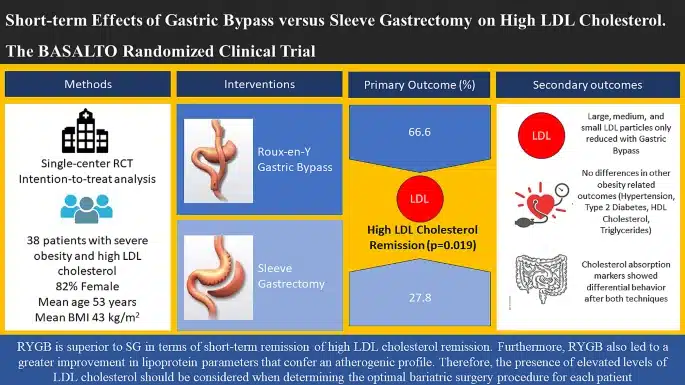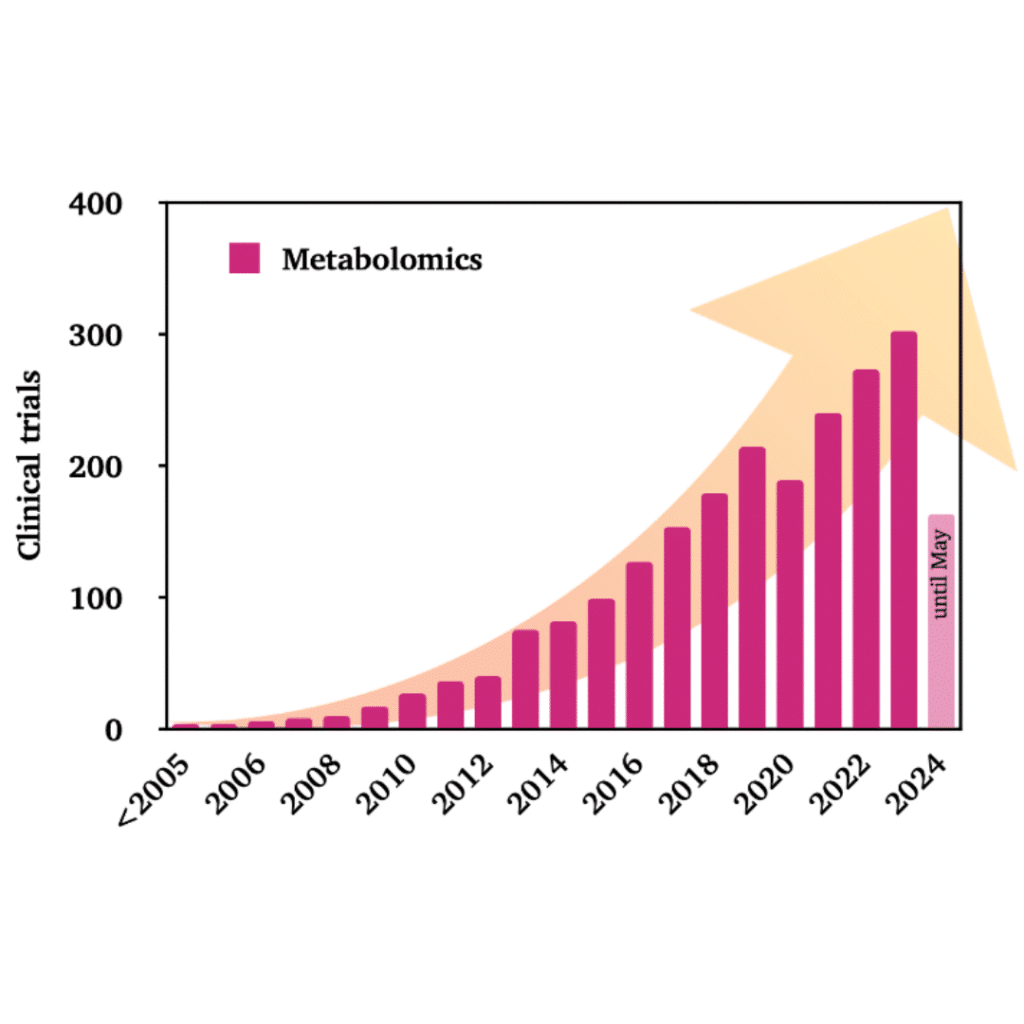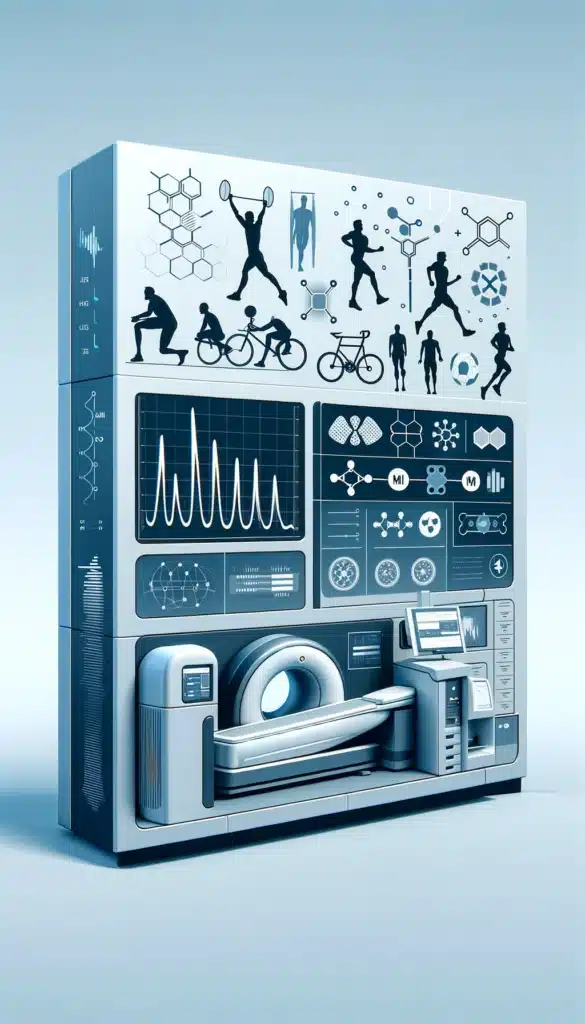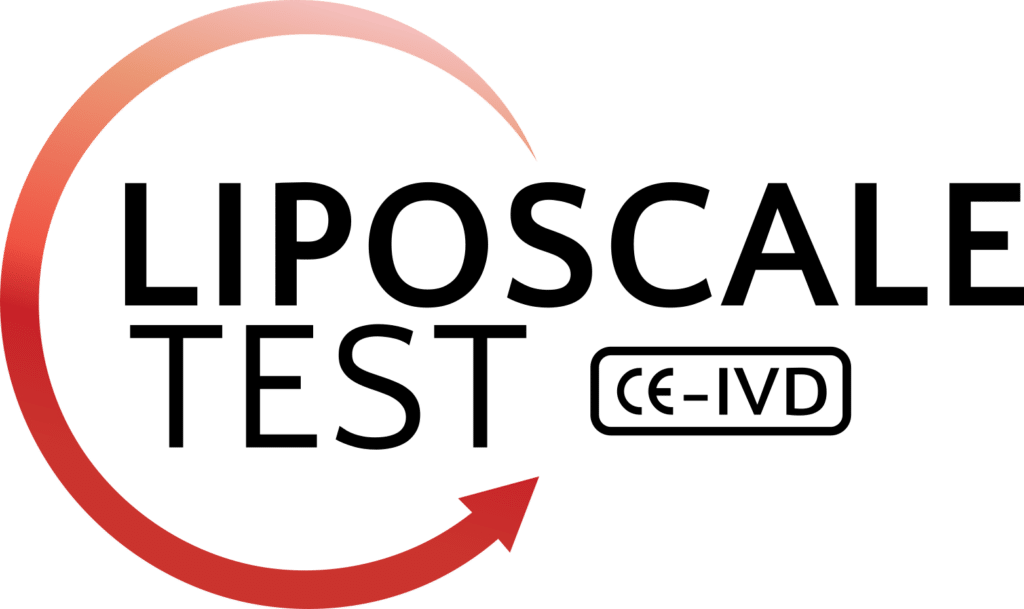Role of Metabolomics in Infectious Diseases: A Cross-sectional Approach
Metabolomics is becoming a crucial tool in biomedical research. By analyzing the complete set of metabolites present in a biological sample, such as serum, plasma, or urine, among others, metabolomics offers a direct window into real-time biochemical processes. This makes it an essential technique for understanding how the body responds to various stimuli and conditions, and how these factors affect human metabolism.
Metabolomics: Cross-sectional Nature in Medical Research
One of the most remarkable aspects of metabolomics is its cross-sectional nature. This means that its applications are not limited to a single field of study or type of disease; rather, they can span a wide spectrum of medical conditions. From metabolic diseases like diabetes to cancers, metabolomics allows for comparative studies and the discovery of common patterns between seemingly distinct diseases.
Particularly in the study of infectious diseases, metabolomics has become an important tool for understanding how the body responds to infections and how different pathogens (viruses or bacteria) affect human metabolism.
In recent years, the application of metabolomics has revealed key metabolic alterations during viral infections such as COVID-19, as well as in bacterial diseases, allowing comparisons of the body’s response to a viral infection like COVID-19 versus a bacterial infection. This facilitates the identification of specific biomarkers for each type of pathogen, enabling the development of more personalized treatments.
'Differential analysis of lipoprotein and glycoprotein profiles in bacterial infections and COVID-19 using proton NMR and machine learning'
A study we participated in, led by Dr. Jordi Camps, head of the Nutrition and Metabolism group at the Pere Virgili Health Research Institute and coordinator of the Biomedical Research Unit at Sant Joan University Hospital in Reus, was recently published in the journal Heliyon. The article presents a study analyzing differences in lipoprotein and glycoprotein profiles in hospitalized patients with bacterial infections and COVID-19, using nuclear magnetic resonance (1H-NMR) and machine learning techniques. This study includes serum samples from 124 COVID-19 patients, 50 patients with catheter-associated bacterial infections, and 50 healthy volunteers.
Results show that COVID-19 patients had larger and more abundant VLDL particles, as well as higher concentrations of cholesterol and triglycerides in these particles compared to the control groups. Patients with bacterial infections showed similar trends but with less significance.
Both COVID-19 and bacterial infection patients had lower levels of LDL cholesterol, larger LDL particles, and a decrease in small HDL particles, with increased triglycerides in HDL particles. Glycoproteins were elevated in both patient groups, with a more pronounced increase in COVID-19 patients.
Profiles obtained with this technique showed a diagnostic accuracy of over 90% for distinguishing between healthy and sick individuals. And an accuracy of 85% for differentiating between viral and bacterial infections.
The analysis of lipoproteins and glycoproteins using 1H-NMR could be a valuable tool for identifying infections. Revealing clear differences between viral and bacterial infections, with promising clinical potential for future applications.

'Lipidomic and Metabolomic Changes in Community-acquired and COVID-19 Pneumonia'
Another study we had the opportunity to participate in was recently published in the Journal of Lipid Research. Led by Dr. Sandra Parra, Associate Physician at Sant Joan University Hospital in Reus and co-leader of the Autoimmunity, Infection, and Thrombosis (GRAIÏT) group. And Dr. Mireia Saballs, Associate Physician in the internal medicine department at Quirón Salud Hospital in Barcelona.
In this study, lipoprotein, glycoprotein, and low-molecular-weight metabolite profiles were compared in patients with community-acquired pneumonia (CAP) and COVID-19 pneumonia. Using nuclear magnetic resonance spectroscopy (NMR) and machine learning techniques. The study included 221 individuals, grouped into healthy controls, CAP patients, and COVID-19 pneumonia patients. With higher rates of hypertension, obesity, and cardiovascular diseases in the COVID-19 patients.
The lipoprotein profile showed lower total cholesterol and HDL levels in pneumonia patients, with more pronounced hypolipidemia (lower total cholesterol and LDL-c) in COVID-19 cases, accompanied by elevated triglycerides and atherogenic lipoproteins.
The metabolite profile revealed elevated levels of glucose, lactate, branched-chain amino acids, and neurotransmitters such as histidine and glutamate, especially in COVID-19 patients, suggesting a significant impact on energy metabolism and inflammation. An increase in glycoproteins was also observed in both pneumonia groups, particularly in severe COVID-19 cases, reflecting a severe inflammatory state.
These results underscore the differences in metabolic profiles between COVID-19 pneumonia and CAP, highlighting the key role these changes play in the immune response.
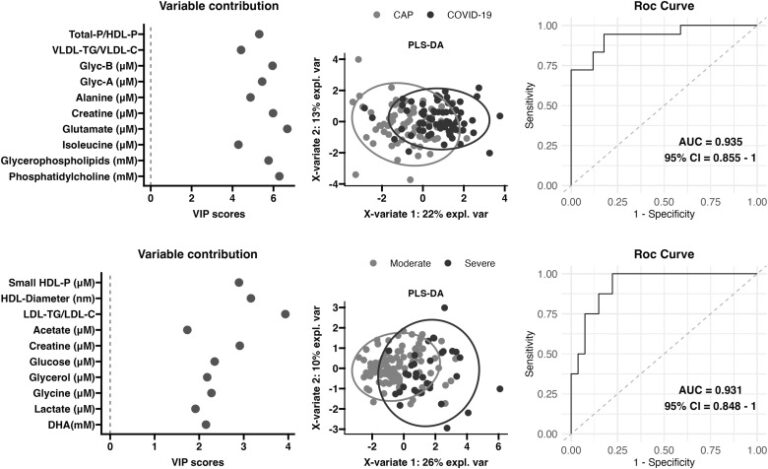
In these studies, NMR-based metabolomics has proven to be a valuable tool for several key reasons. Its future application in medicine promises significant advances in understanding host-pathogen interactions, the development of personalized treatments, and the diagnosis, prognosis, and monitoring of diseases.
